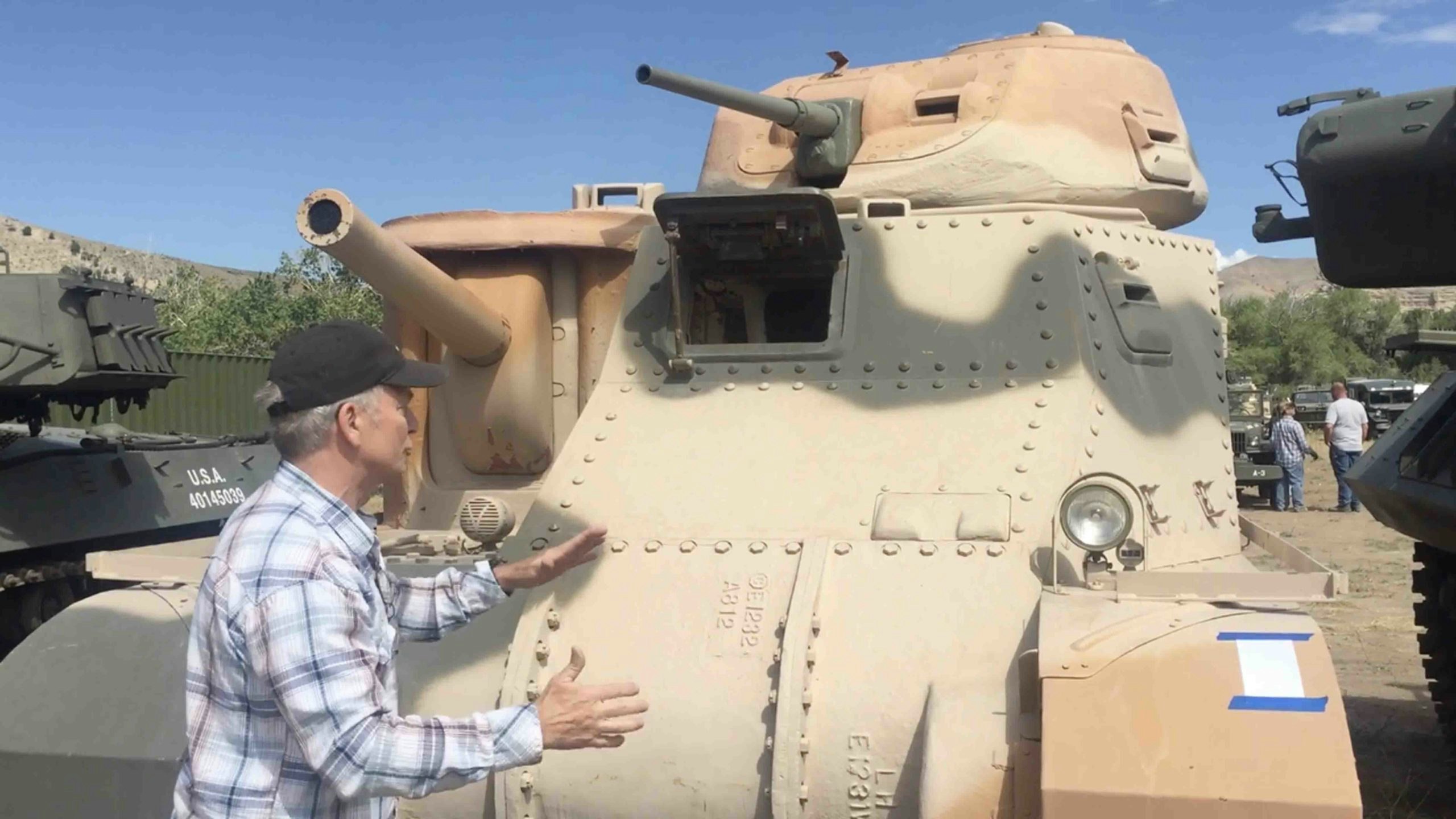The gigantic new National Museum of Military Vehicles will finally open on Aug. 7.
The museum, located just south of Dubois, originally planned to open in May but was postponed because of the Coronavirus pandemic.
“We are opening the museum Friday, Aug. 7, at 10 a.m.,” founder Dan Starks said. “Admission will be free for the first three days. After that normal admission of $15 will be charged, except for veterans, who will get in free.” Under 18 is $10 admission with under 8 years old getting in for free.
“Face masks and social distancing is required so we can keep all of our older veterans safe,” he said. “We will still be working on finishing some of the exhibits but we have gotten tired of turning everyone away who wants to come inside. We are staffing up and training for the opening.”
The $100 million self-funded project has been a dream of Starks, who bought his first Wyoming property in 2011.
Construction on the new museum started in May of 2017. It is a 140,000 square foot facility, which is designed to hold 200 military vehicles.
But it is much more than a display of vehicles.
Starks is not a veteran but said he has such a high degree of respect for those who served, he sees this project as his life work.
He worked 32 years at a medical equipment company in Minneapolis and was CEO before retiring in 2017. The company was doing $6 billion in revenue per year. He had 28,000 employees working on life-saving devices for the human body, specializing in heart catheters and other devices.
“At one time, we figured our devices were saving a life every three seconds around the world,” he says.
His company was acquired by Abbott Laboratories in 2017. Their web site shows Starks owns over $600 million in stock in the big international company and serves on its board.
The life dream of Dan and his wife Cynthia was to settle in Dubois and do some project to recognize the service of America’s veterans.
And boy, is this ever some project.

Using Richardson Construction of Cheyenne as a general contractor, the project has hummed along on schedule. And although the gigantic size of the facility, (you can almost put three football fields inside its walls), Starks now worries that it might be too small.
They own more than 400 of the most pristine historical vehicles from World War II and other conflicts. He thinks he might only get 200 of them inside the walls. It is assumed to be the largest and best private collection in the world.
The Starks’ daughter Alynne is the executive director of the facility. Admission will be $15 for adults and $10 for visitors under 18. Veterans will be admitted for free. The museum will employ 20 people.
Their plan for the museum has gone far beyond just a place to display vehicles. “We want to create displays that show the landing at Normandy, the surrenders in Germany and Japan, the Battle of the Bulge, and other great moments in our country’s military history,” he says.
Dan sees the facility having three components:
- To honor the service and sacrifice of millions of Americans.
- Preserve the history of what happened during these wars.
- Provide an educational experience.
The vast array of vehicles goes beyond the killing machines of tanks, artillery, and flamethrowers. It also includes dozens of the machines that made the wars winnable.
Starks likes to discuss how the Red Ball Express helped secure the victories. This was the supply chain that seemed to provide endless amounts of food, ammo, and war machines as Allied troops marched toward victory.
He wants to show how America was able to convert its massive manufacturing expertise to enable the Allies to fight two different wars in different parts of the world and win both in just three and a half years.

The new museum will show how the American ability to mass-produce cars and trucks was converted to produce tanks, jeeps, airplanes, and other war machines in record amounts that just wore down the enemy.
“Germany built beautiful machines, but they did not understand mass production like Americans did. It was impossible for them to keep up when it came to replacing and resupplying their troops at key moments in World War II. We want to honor everyone who participated in this great victory. This museum will showcase that effort but showing the machines that were built and how they were utilized,” he said.
Near the middle of the building’s interior is an amazing vault, unlike anything west of the Smithsonian. It will hold his $10 million collection of historical weapons, including a rifle fired at Custer’s Last Stand and a pistol used by General Pershing in World War I.
The collection includes 270 Winchester rifles. The vault has a safe door that would look just right at the national mint.
The facility will have meeting rooms and members of the Wyoming legislature are convening there in October.
It also has the Chance Phelps Theatre, named for the brave Dubois Marine who died April 9, 2004 in Iraq. The movie Taking Chance was about that soldier.
There will be large library with one of the world’s largest collections of manuals and other information about military vehicles.
There is even a Russian-built MiG 21 that was used in the Vietnam War against American soldiers. It is flyable.
Besides the main museum facility, the Starks built a large building just off Main Street in Dubois to hold many of their vehicles and to be a shop to keep them running.
Eight years ago, their first home in Dubois was an old homestead. More recently they have purchased a 250-head cattle ranch. Recently they bought a third ranch, which now has 64 bison grazing on it.
“We love Dubois and we love Wyoming. This is our great adventure,” Starks concluded.





